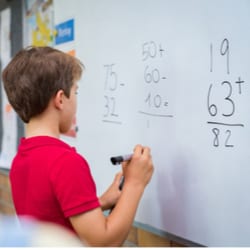Exploring patterns and relationships
Using number patterns and thinking algebraically
Home » Numeracy Focus Areas » Exploring patterns and Relationships
General overview
This focus involves learners exploring number patterns and relationships and using these to predict trends.
In the early years, children recognise, create and extend simple patterns. They identify and describe naturally occurring patterns using rules and relationships that identify trends. They express trends through tables, graphs and numerical and algebraic expressions.
Learners use increasingly complex algebraic expressions as they move through the levels, progressing to creating algebraic expressions with two unknowns.
At upper levels, students model and make predictions using practical applications of patterns, and understand and recognise the range of algebraic expressions and relationships can be used to represent different patterns.
Students connect common mathematical functions such as linear, quadratic, and other polynomial expressions; as well as rational, exponential, and trigonometric and cyclic functions to everyday events and phenomena such as climate change, population growth and tidal movements.
A key element of this numeracy focus is the nature of a
Learners develop a sense of wonder at the beauty and order in which patterns occur in their everyday environments, from architecture through to natural phenomena such as shell spirals and plant foliage.




